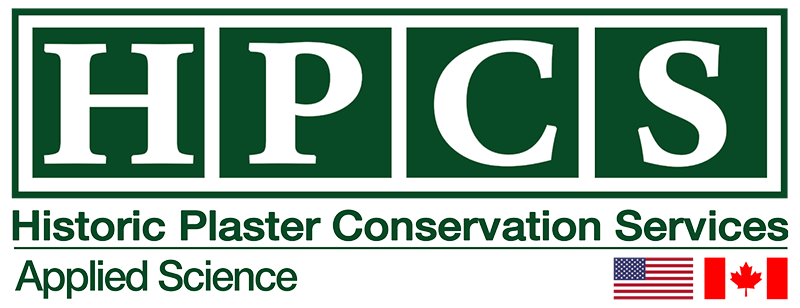Belleville, Ontario (1883)
The Building:
A beautiful historic house museum.
Project Synopsis:
Since 2008, Historic Plaster Conservation Services has been the plaster conservator for this beautiful historic-house museum featuring extensive decorated paint finishes. Our initial involvement was precipitated by an extra heavy load of snow breaking through the roof and causing the wood lath and plaster ceilings to sag in two rooms. After successfully realigning and consolidating these ceilings, HPCS was asked to address more complex plaster and finishes issues in other parts of the house.
Glanmore is designated as a National Historic Site in large part because the plaster work in every room of the house is elaborate and decorated with very fine quality paintings – portraits, still lifes and stenciled patterns painted directly on the plaster surface.
The presence of valuable and fragile decoration complicates the plaster conservation challenges immensely. To be sure, there is no place in a historic site such as this for the screws and washers approach advocated by some. Apart from the fact that screws and washers are often applied with such force that they crush the plaster and actually cause failures, even careful applications cause considerable damage and require large areas of a decorated ceiling to be defaced by repair materials. The HPCS approach is different.
For Glanmore, we formulated and applied a specifically appropriate consolidation material that was readily absorbed by the porous plaster, both strengthening it and bonding the plaster to its wood lath substrate. This was done from above and had no negative impact on the decoration of the ceiling surface.

During treatment, the ceilings were supported by 264 HPCS Micro-Jacks™ with special padded contact surfaces strategically placed to provide support without damaging the paintings.
For the actual consolidation, we deployed the HPCS Plaster Remote Consolidant Applicator. Main floor rooms had fully furnished historic house settings in the rooms above them.

There was no appetite for lifting the floors in these rooms.The treatment application was performed with the Remote Consolidant Applicator through ¼” diameter holes drilled in the floor between joists. In this case, the floors under carpets were deemed to be of lesser value than the ceilings below and the disruption of taking up flooring was thus avoided. The treatments were highly successful, low-level interventions that accomplished all the conservation goals and left the decoration in perfect order for fine finishes conservators to address in subsequent work programs.

